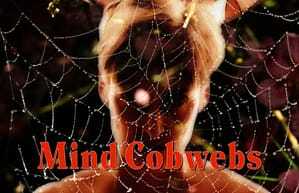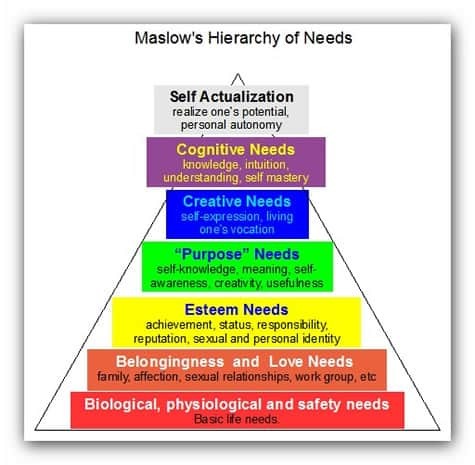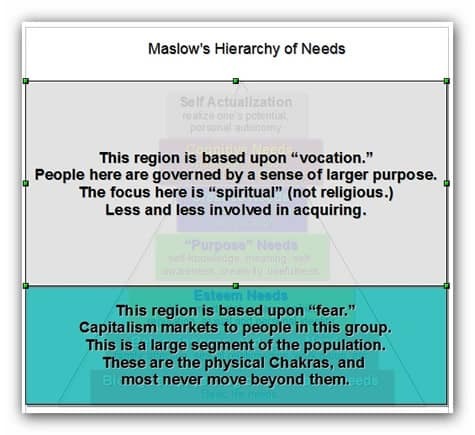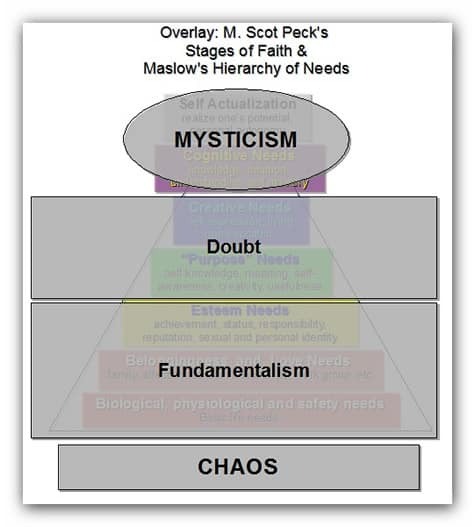Mind Cobwebs

Mind Cobwebs — We’ve been conditioned by our families and tribes to ‘fit in.’ Making positive change is therefore difficult…

Want to learn more about living a full and meaningful life?
Want to have the best relationship ever?
Check out my books
The Mind’s CobwebsWe’ve been conditioned by our families and tribes to ‘fit in.’ Making positive change is therefore difficult, as many changes go against our ‘tribal’ rules. We explore how we set our values, and how to begin the process of questioning everything.
Patterns of Development — dealing with the mind’s cobwebsLet’s look at emptying the mind. But before we can explore a western take on the eastern idea of emptiness and how to use mindfulness, I want to talk about how fear and anger contribute to blocked or stunted growth.
There are a couple of human development models that I agree with. In this article, I want to discuss three. Next article, as we explore Mindfulness, I’ll pull it all together.
Maslow, Myss, and PeckSounds a little like a law firm, right? Some years ago, I created to following chart:
LocationMaslowMyssCrown Chakra, # 7Top of HeadTranscendence —helping others to actualizeSelf Knowing
wisdom, knowledge,
consciousnessBrow Chakra, # 6Bridge of Nose,
upper brow,
sinusesSelf-actualization
personal growth, self fulfillmentSelf Perception
psychic perception,
accurate interpretation
clear seeingThroat Chakra, # 5Throat, neck
occipitals,
jaw, lower face Aesthetic Needs
beauty, balance, form,
expression of true selfSelf Expression
Clear communication,
creativity, resonanceHeart Chakra, # 4Heart,
upper chest,
upper back“Purpose” Needs
self-knowledge, self-awareness,
meaningSelf Acceptance
Balance, compassion,
healthy relationshipsSolar Plexus Chakra, # 3Solar Plexus,
upper belly, mid-back
to pelvisEsteem Needs
achievement, status,
responsibility, reputationSelf Definition
Vitality, spontaneity,
strength of will, purpose,
self-esteemBelly Chakra, # 2Belly from navel down,
sacrum, pelvisBelongingness and Love Needs
family, affection, sexuality,
relationships, work group, etc.Self Gratification
Fluidity, pleasure,
healthy sexuality,
feelingsRoot Chakra, # 1Tailbone
perineum, legs,
sciatic pocketsBiological, Psychological and
Safety Needs
basic life needs, survival instinctSelf Preservation
Stability, grounding,
physical health,
prosperity, trust
Now, in a sense, the chart ought to be the other way around, as we move ‘up’ from ground to ‘heaven,’ and of course that’s how it looks in Maslow’s hierarchy.

In both Maslow’s hierarchy and in Chakra Theory, we begin at the lowest level and develop (or not!) from there.
Why Most are Stuck at Level ThreeThe first three levels are physical, and are each about safety, belongingness, and escaping abandonment. Infants learn from the start to do what is necessary to keep the food flowing and the physical contact coming. Most people are highly ‘physical reality based,’ in that they fear actual, physical loss and/or abandonment.
A perfect illustration of this is how quickly people will abandon their ‘selves’ when someone threatens to leave them. Or they might think they are going to be fired. Principles fly out the window as the person seeks to save the relationship.
We learned to do this as children—staying a member in good standing of the tribe seemed to be ‘life and death.’
The Flavours of FearThe two main flavours of fear are ‘fear of loss’ and ‘fear of change.’ Abandonment, for example, could fit into either category. Now this might be obvious but think about advertising. Virtually all advertising targets one or the other of these fears. We’re conditioned to use the same products and the same methods for gaining safety and security. When in doubt, buy something!
 The Marketing of Fear and Lack
The Marketing of Fear and LackMarketing is directed at the largest demographic and caters to what “moves” them. We are thus bombarded with lack, loss, and fear-based ads, movies, TV shows, etc. We are told that if only we will buy in to the western consumerist lifestyle, we will have it all. We will be safe, popular, and smell nice.
Yet, it just doesn’t seem to work out.
The ‘vocational’ demographic, above, starts at the transition point between ‘physical’ and ‘spiritual’—and it’s simply a change of focus, orientation and direction.
Now, knowing this and doing something about it are two different things. I’ll soon spend some time looking at Buddhist concepts for dealing with the fear messages that occupy our minds at all hours of the day. For now, I just want you to “get” how they are implanted.
M. Scot Peck and the Stages of FaithPeck, best known for his amazing book, The Road Less Traveled, proposed four faith or development stages in his later work, The Different Drum.
Here they are:

Peck said that everything follows these stages—physical, psychological, mental, and spiritual development.
He suggested that chaos is so unstructured that it breeds an intense desire for order and rules, and fundamentalism is the perfect “cure” for this. There are always people around that want to tell others how to live, after all.
For most people, fitting in and following the rules is all they want. Anything else is just too scary. Therefore, their effort is put into buying a house, having kids, getting raises and moving up the ladder at work. At the end of their working lives, most are exactly as Thoreau described: living lives of quiet desperation.
The stage beyond fundamentalism is doubt. This is the stage of questioning our beliefs, norms, goals, and directions. It’s the stage of moving from home, moving out of town, doing something different and challenging everything. Many people get just a taste of this in College or University, before they settle back into Fundamentalism, sell out, and buy the Beemer.
Doubt is the Exciting StageDoubt leads to questioning and mistrust—just the opposite of what society wants of good, loyal sheep.
Doubt that is informed and guided by mysticism does not seek to change the system. It seeks to redirect the attention of the individual to the only thing anyone can do anything about—him or herself.
Gandhi, for example, did not change England or India. He changed himself. He sat, he spun yarn, and he talked and he walked. He said, “You must be the change you want to see in the world.” and “Always aim at complete harmony of thought and word and deed. Always aim at purifying your thoughts and everything will be well.”
I suspect you’ve read this far because you are sick and tired of being bored, confused, angry, and turned off. In the end, there is only one way out, and it is the path of doubt leading to a change of heart, mind and direction. Our next articles will address these changes.
Facebook Twitter


